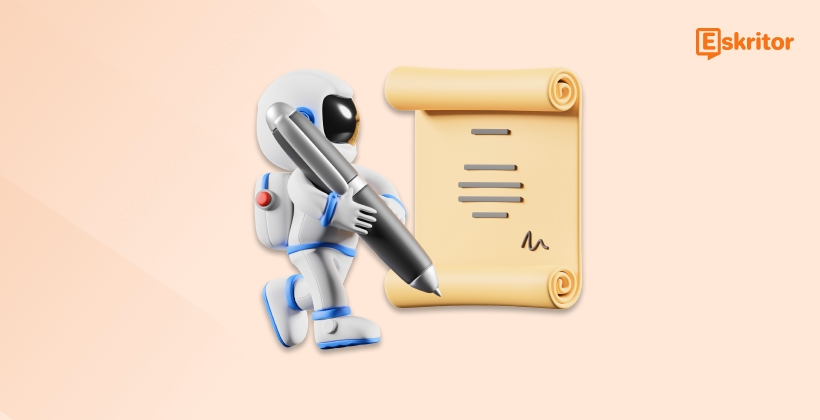The Future of AI Writing Technology Explained
The Future of AI Writing Technology Explained
Blog Article
AI Writing Tools vs. Human Writers – A Comparative Analysis
As artificial intelligence (AI) evolves, it remains to revolutionize how exactly we method contemporary modifying practices. From grammar correction resources to advanced material technology platforms, AI writer is reshaping the way in which writers, publishers, and designers improve their work. This blog considers the position AI plays in modern editing and the influence it has across industries.

AI-Powered Tools Leading the Charge
AI-powered methods have become an fundamental part of editing workflows. Application fueled by natural language processing (NLP) and unit learning can do responsibilities like grammar checks, stylistic recommendations, and sentence restructuring with amazing pace and accuracy.
For instance, AI-based syntax checkers can identify errors that the eye may possibly neglect, such as subject-verb agreement problems or dropped modifiers. Likewise, fashion innovations developed by AI ensure that tone and movement arrange with the intended audience, which is priceless for qualified editors.
These methods aren't just limited by conventional grammar corrections. They can handle improving readability, transforming inactive voice to productive style, and also paraphrasing whole paragraphs without adjusting the meaning.
Efficiency Meets Time Savings
Reports reveal that the use of AI tools may lower editing time by up to 30%. Instead of poring over every phrase physically, writers may concentration their efforts on creative and strategic aspects of content. That change enables professionals to manage larger volumes of text in smaller periods, that will be particularly useful for industries like publishing and electronic marketing.
Additionally, predictive AI characteristics may highlight recurring problems, helping authors enhance their abilities over time. For companies, that equals less methods allocated to changes and more refined components right from the start.
Enhancing Supply and Globalization
AI's role in contemporary modifying stretches beyond efficiency. Advanced translation and localization methods let designers to change material seamlessly for world wide audiences, breaking down language barriers with precision. This technology ensures that the exact same information may resonate with countries global while keeping their authenticity.
AI also raises inclusivity requirements by increasing supply in content. Like, algorithms may recognize probably non-inclusive language and suggest alternatives. This capability enables editors to refine publishing therefore it resonates with varied audiences.

Striking a Balance Between AI and Individual Imagination
While AI excels in pace and precision, it does not change human editors. Machines often absence the capability to read nuance, sentiment, or national situation fully. The best process combines AI's efficiency with human imagination and perception, resulting in really exceptional work.
By leveraging these systems in modern modifying techniques, builders and writers likewise may produce high-quality content that aligns with the fast-paced needs of today's electronic world. AI may be the potential of modifying, but the human touch will be required for storytelling and connection. Report this page